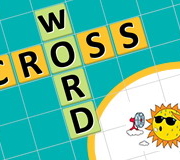The Wonders of the Moon Cycle
Have you ever looked up in the night sky and wondered about the different shapes of the moon? From a thin crescent to a full, glowing orb, the moon changes its appearance throughout the month. This fascinating transformation is known as the moon cycle. Let's dive into the magic of moon cycle phases and learn more about how they work!
Understanding the Moon Cycle Phases
The moon doesn't produce its own light. Instead, it reflects the light of the sun. As the moon orbits the Earth, different portions of the moon are illuminated, leading to various moon cycle phases. These phases include:
New Moon: The moon is located between the Earth and the sun, making it nearly invisible from our perspective.
Waxing Crescent: A small, crescent-shaped slice of the moon becomes visible.
First Quarter: Half of the moon is illuminated.
Waxing Gibbous: More than half, but not the entire moon is illuminated.
Full Moon: The entire face of the moon shines brightly.
Waning Gibbous: The illumination starts to decrease but remains more than half.
Last Quarter: Only half of the moon is visible again, but it's the opposite half from the First Quarter.
Waning Crescent: The moon returns to a thin crescent shape before transitioning back to the New Moon phase.
Moon Cycle for Today and Beyond
If you're curious about the moon cycle for today or any other day, there are various tools and websites available. Whether you use a moon cycle calculator, a moon cycle watch, or even a moon cycle by date chart, you can easily figure out the current phase of the moon.
Visualizing with a Moon Cycle Diagram
For those who love visual aids, a moon cycle diagram is a perfect tool. These diagrams showcase all the moon phases in their sequence, offering a clear and concise view of how the moon transforms over a month.
Interactive Learning with ESL Games Plus
For young astronomy enthusiasts eager to learn more about the moon and its wonders, ESL Games Plus offers interactive science games. With these games, children can delve deeper into the mysteries of the moon in a fun and engaging manner!
Fact Section: FAQs on the Moon Cycle
Why does the moon have phases?
The moon's phases are a result of its orbit around the Earth and how much of its illuminated side is visible from our perspective.
How long does a complete moon cycle last?
A complete moon cycle, from one New Moon to the next, lasts about 29.5 days.
Can I track the moon cycle on my watch?
Yes! Some watches, known as moon cycle watches, display the current phase of the moon.
Where can I find a moon cycle calculator?
Many online platforms and apps provide moon cycle calculators. They help you determine the moon's phase for any given date.
What's the difference between a waxing and waning moon?
"Waxing" means the moon is getting larger (more illuminated), while "waning" means it's getting smaller (less illuminated).
Conclusion: The Enchanting Dance of the Moon
The moon cycle is one of nature's most captivating phenomena. From poets to scientists, the moon has always been a source of inspiration and wonder. By understanding its phases, we get a front-row seat to the celestial ballet that unfolds in the sky every month. Whether you're tracking the moon cycle for today or looking forward to the next Full Moon, there's no denying the allure of our luminous satellite.










